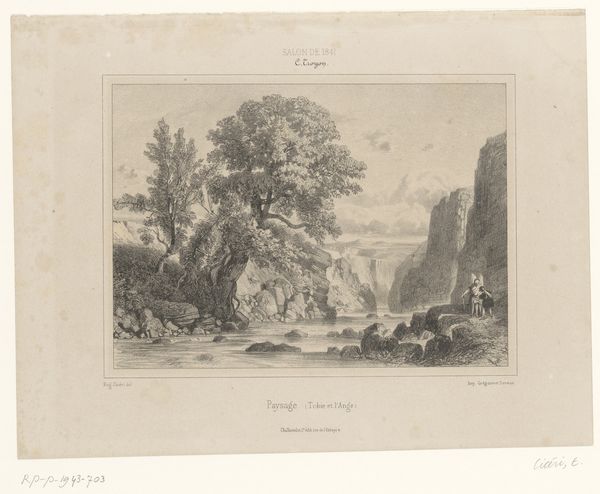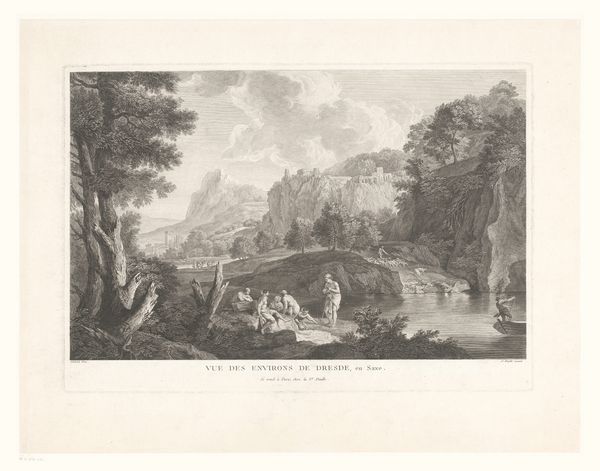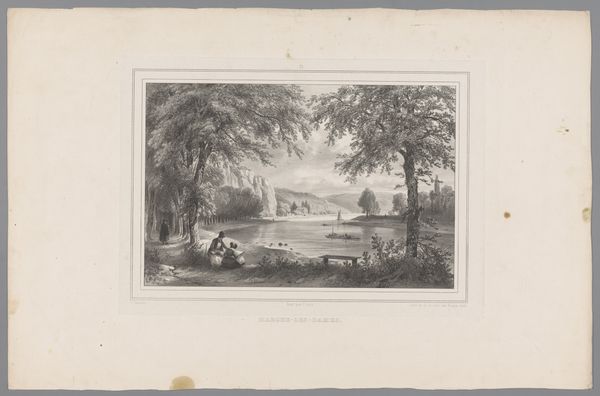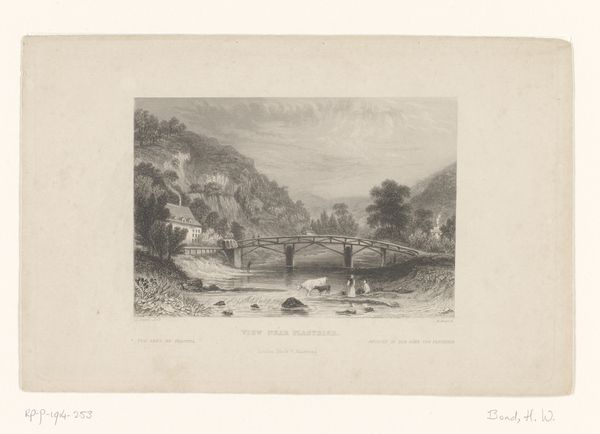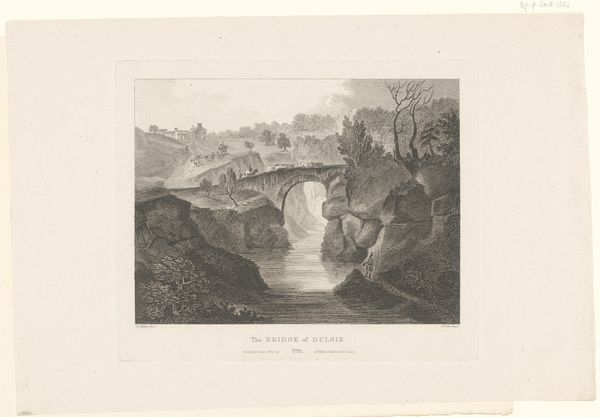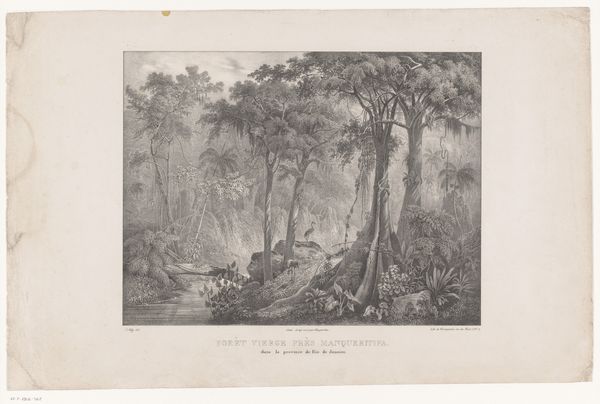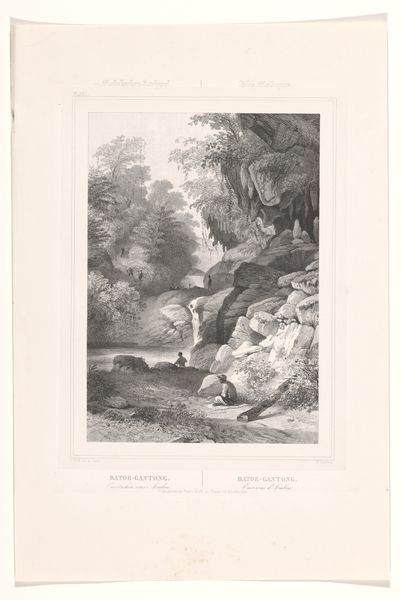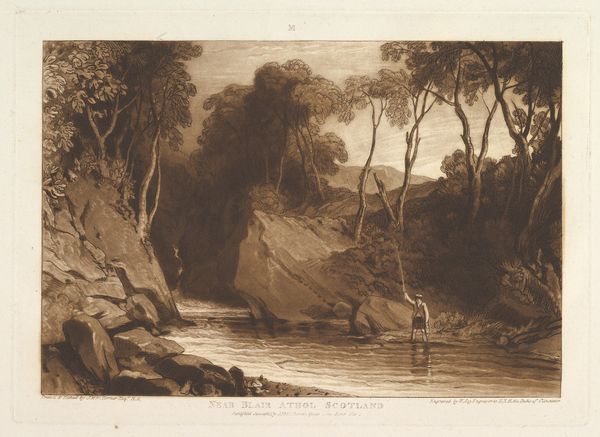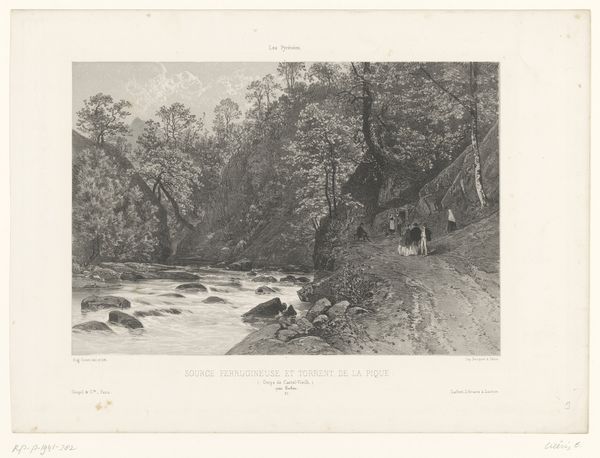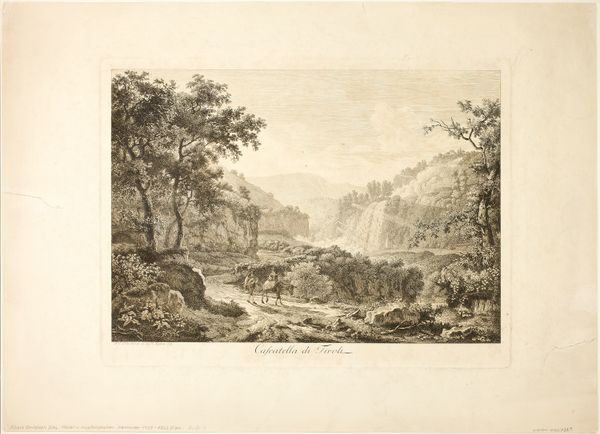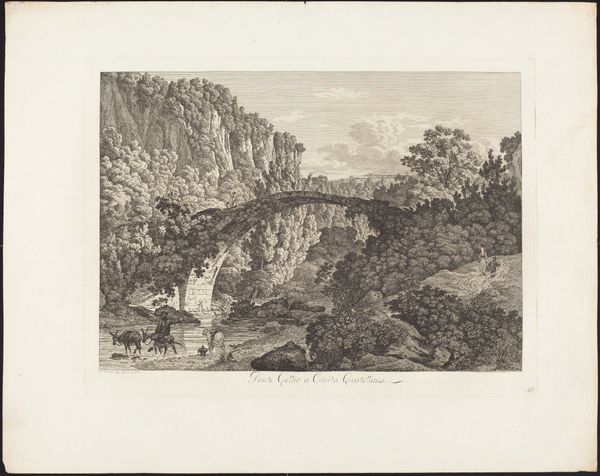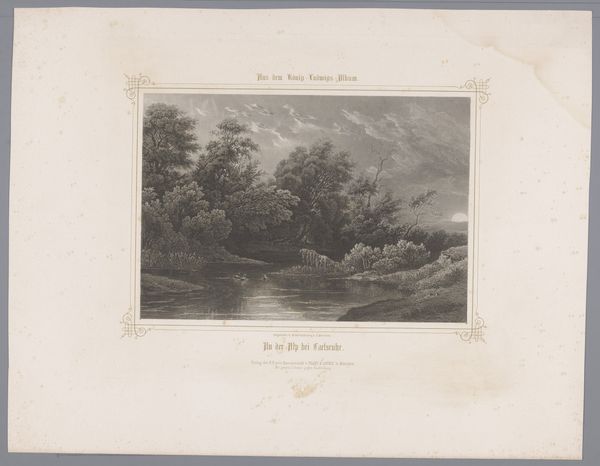
print, engraving
# print
#
landscape
#
romanticism
#
line
#
engraving
#
realism
Dimensions: height 260 mm, width 360 mm
Copyright: Rijks Museum: Open Domain
Louis Jules Frederic Villeneuve made this print of a watermill near Brienz in Switzerland, using a technique called etching. Consider the public role of images like this one. In the 19th century, prints like these were a common way of circulating views of landscapes to a wide audience. This print, with its picturesque mill, rugged rocks, and quaint figures, appealed to a growing tourist industry. It presented an idealized view of Swiss rural life. But the print also reveals the impact of industrialization on traditional ways of life. The watermill, once a vital part of the local economy, is presented as a romantic relic of the past. To understand this image more fully, we need to look at the social conditions that shaped its production. By researching the history of tourism, printmaking, and rural life in 19th-century Switzerland, we can better appreciate its complex layers of meaning. The image reminds us that art is never created in a vacuum but is always shaped by the social and institutional forces of its time.
Comments
No comments
Be the first to comment and join the conversation on the ultimate creative platform.
